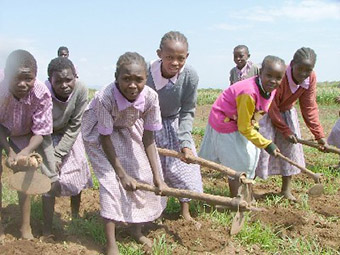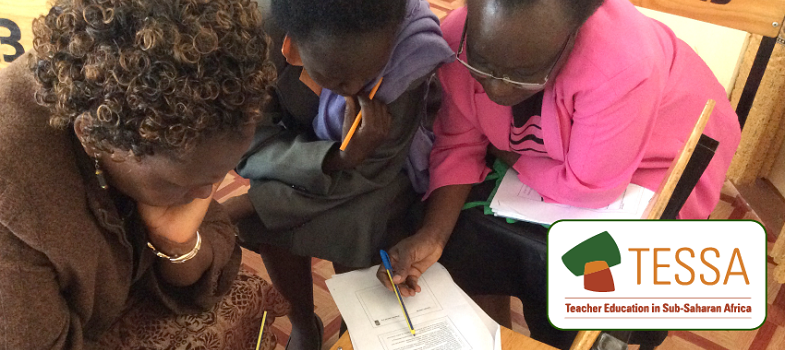Resource 3: Barrina Primary School, Kenya, school garden
![]() Background information / subject knowledge for teacher
Background information / subject knowledge for teacher
The garden was established to grow food crops. Teachers have been encouraged to develop ideas for curriculum activities through the designing, development and management of the gardens. Other schools in India and the UK are also doing the same so they can share ideas. Students from the age of 9 to 13 are participating in the scheme.
During lessons students consider questions about:
- where our food comes from;
- how land is used;
- how our lives are interconnected across the globe through food, looking at issues of Fair Trade;
- levels of nutrition and malnutrition in all communities;
- how diets vary in different countries;
- how social, economic and environmental factors influence nutrition and food security;
- the impact of growing food locally or importing food from around the world.
Attitudes to growing food vary around the world. Many children in the West know little about how food is produced or where it comes from. This lack of understanding about the connection between food, lifestyles and nutrition is often reflected in diet. Most children in rural Africa and India know how food is produced, but may consider farming as a low-status occupation.

Gardens for Life, which is the project that this school joined, aims to increase pupils’ knowledge and awareness of food and their understanding of other ways of life around the world. As the gardens have developed, the pupils have gained hands-on skills in horticulture. Improved practices have been introduced. For example, water catchment schemes have resulted in improved yields. In some cases, pumps and micro-irrigation systems have been installed. Learning has not been limited to horticulture – experiences from the gardens are brought back into the classroom in other curriculum areas such as science, geography, global citizenship and maths. Materials are now being developed to support these curriculum areas.
The produce from the gardens is used to provide meals for schoolchildren, providing a vital component in their diet as sometimes this is the main meal that they get during the day. Food security is enhanced as these gardens are able to provide a regular supply of food. Any surplus provides profits for the school when it is sold to the local community where it is much appreciated. Pupils can see that viable businesses can be based on horticulture. Links with the local community are being strengthened as knowledge and experiences between the pupils and farmers are shared.
Adapted from: http://www.handsontv.info [Tip: hold Ctrl and click a link to open it in a new tab. (Hide tip)] (Accessed 2008)
Resource 2: Worksheet for the visit to the market



